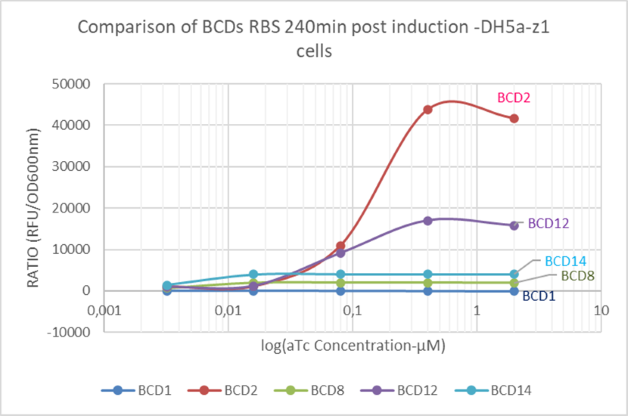Part:BBa_J428034
BCD1
Bicistronic design (BCD1) element
Our team characterized the BCD1 RBS in the genetic context of the luxI synthase gene.
Measurment
We characterized this RBS in the genetic context of luxI. We built a fusion of the first 36 nucleotides of the LuxI synthase with sfGFP to characterize the relative strength of our deployed RBS in the context of the LuxI coding sequence. To quantify this output we measured the fluorescence using microplate reader FlexStation3 (Molecular Devices) with excitation wavelength 485nm and emission wavelength 510nm. We conducted measurements in different time points after the induction with aTc, using different concentrations of the inducer.
The BCD1 did not work well in this genetic context and should be used with caution by future teams.
'Figure 1: Comparison of all the RBS our team tested in the genetic context of RBS'
'Figure 2: Comparison of all the BCDs our team tested'
Sequence and Features
- 10COMPATIBLE WITH RFC[10]
- 12COMPATIBLE WITH RFC[12]
- 21COMPATIBLE WITH RFC[21]
- 23COMPATIBLE WITH RFC[23]
- 25COMPATIBLE WITH RFC[25]
- 1000COMPATIBLE WITH RFC[1000]
| None |


